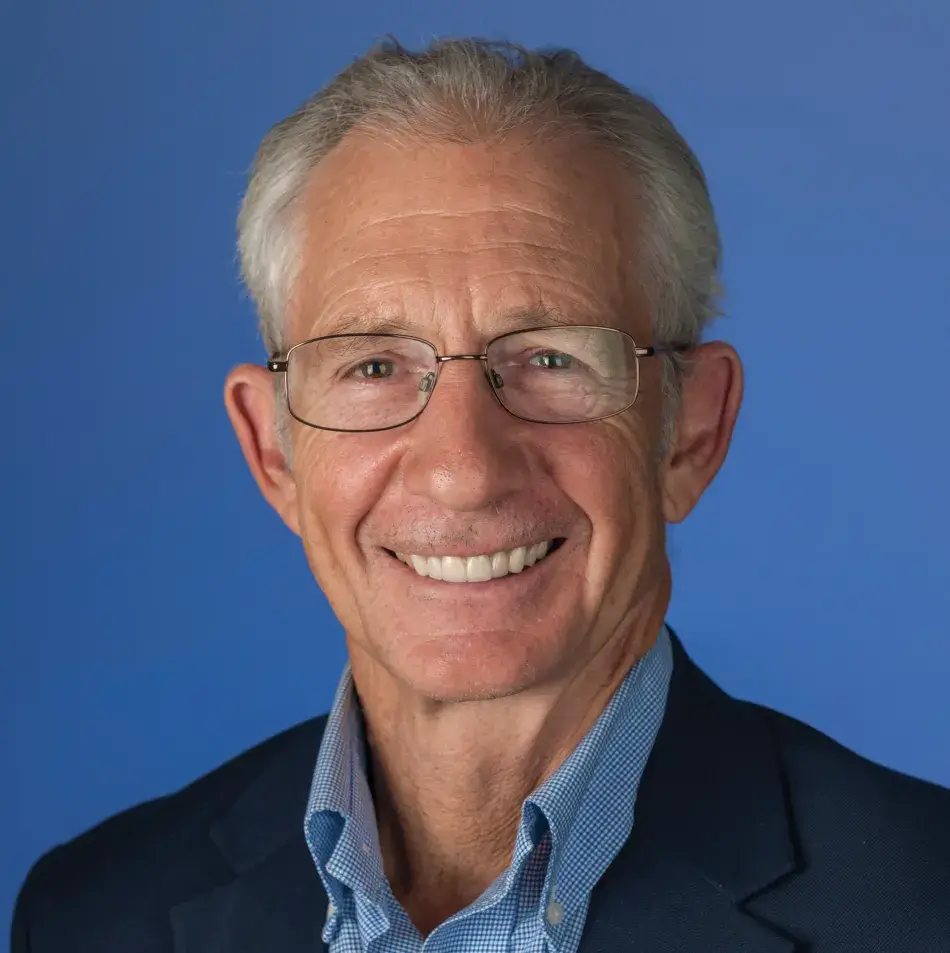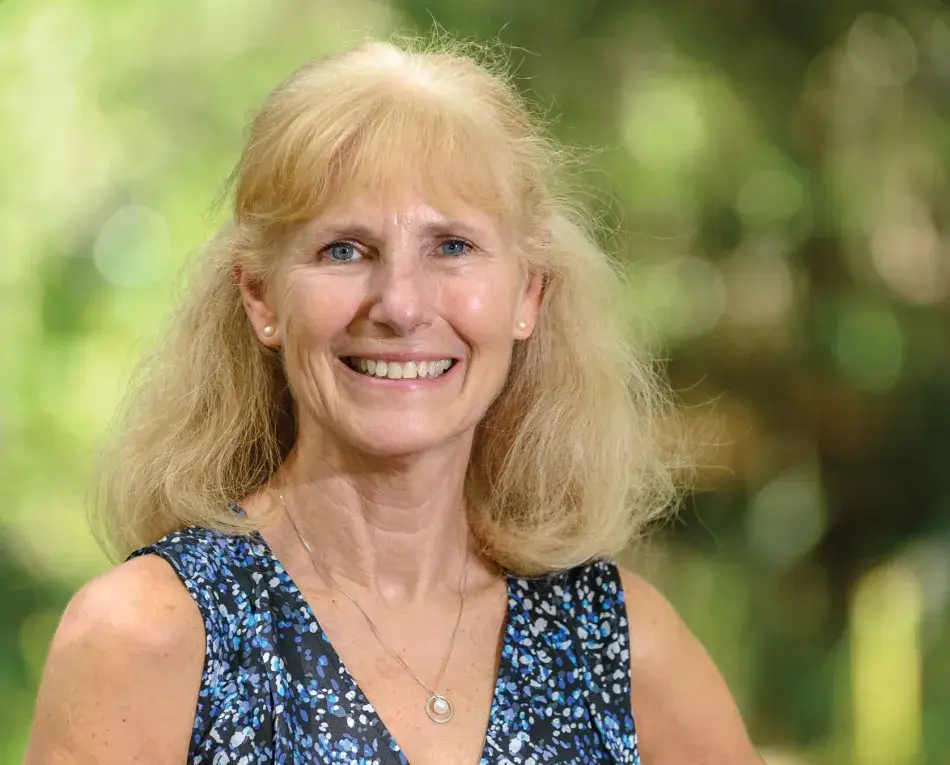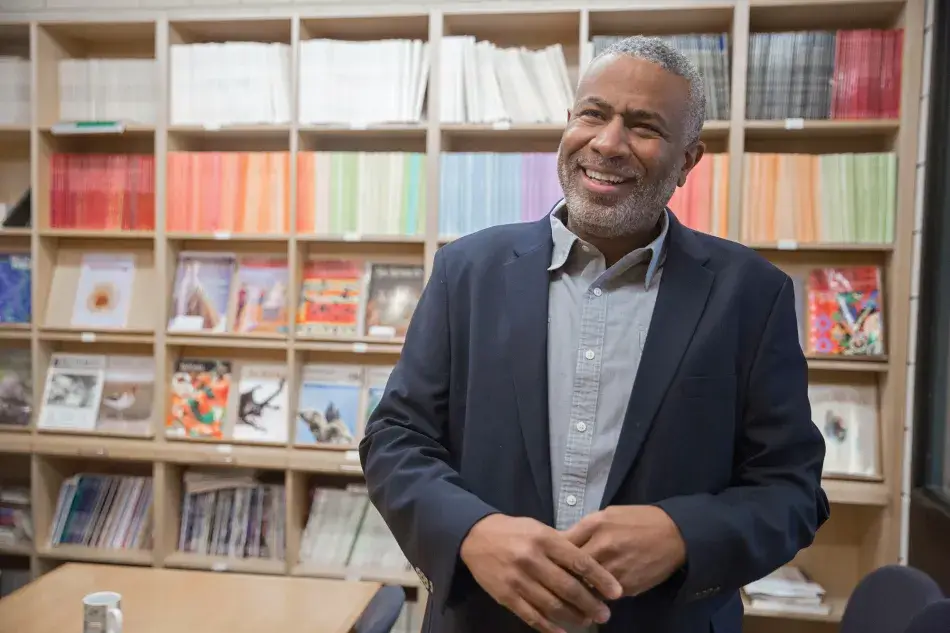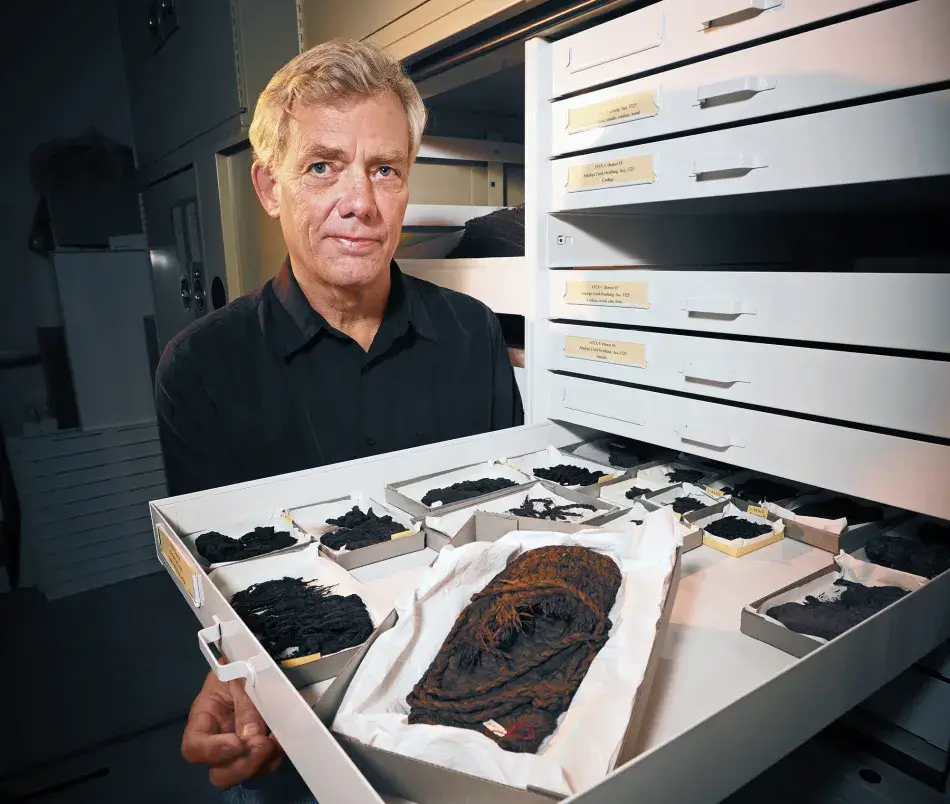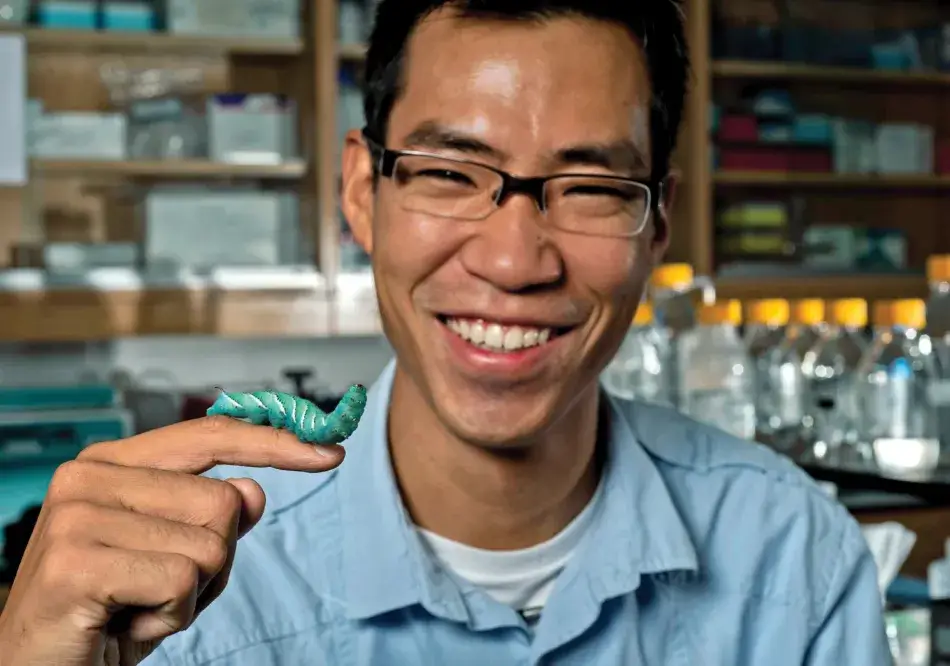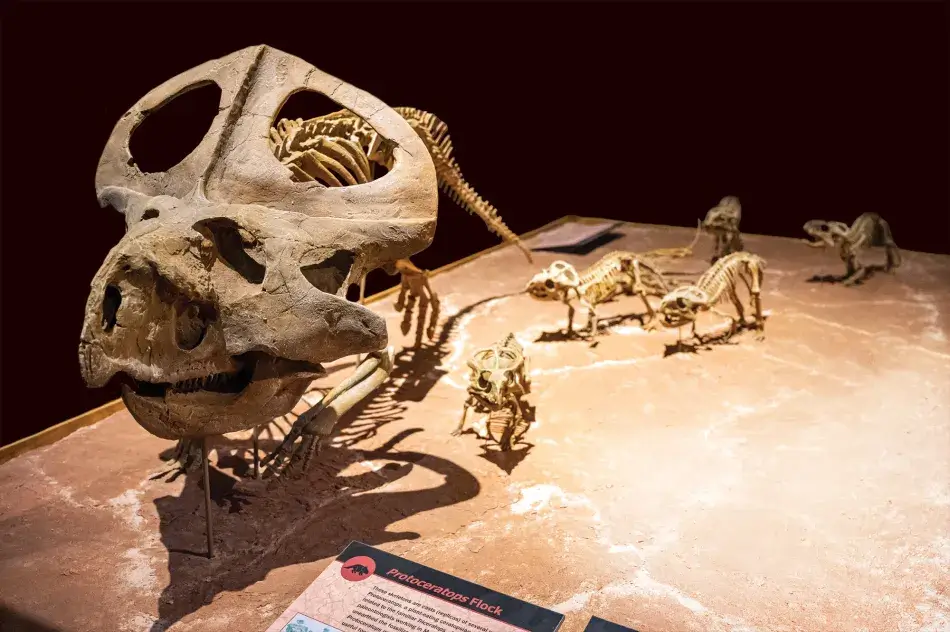
“A Night at the Museums” was conceived of and hosted by Academy members and Gainesville Representatives Pamela Soltis and Douglas Soltis (both, University of Florida). They wanted an event that would highlight the utility of the modern museum collection while connecting members from across the country. This program gave a behind-the-scenes look at museums in Florida, Massachusetts, Michigan, California, and Oregon – all of which are associated with universities in the Academy’s network of Affiliate institutions. An edited version of select portions of the presentations and Q&A session follows.
2104th Stated Meeting | February 28, 2022 | Virtual Event
Morton L. Mandel Conversation
Douglas Soltis: Thank you for joining us for our Night at the Museums event.
Pamela Soltis: We are joining you this evening from the Denny Gallery at the Florida Museum of Natural History’s Powell Hall, our exhibits and public programs building. Beyond these exhibits, the Florida Museum is home to over forty million specimens and artifacts – items that the public rarely, if ever, gets a chance to see.
DS: Perhaps many of you saw the movie Night at the Museum, in which the organisms, people, and museum artifacts come to life after the museum is closed at night. And so, here we are at a museum . . . at night (at least in Gainesville).
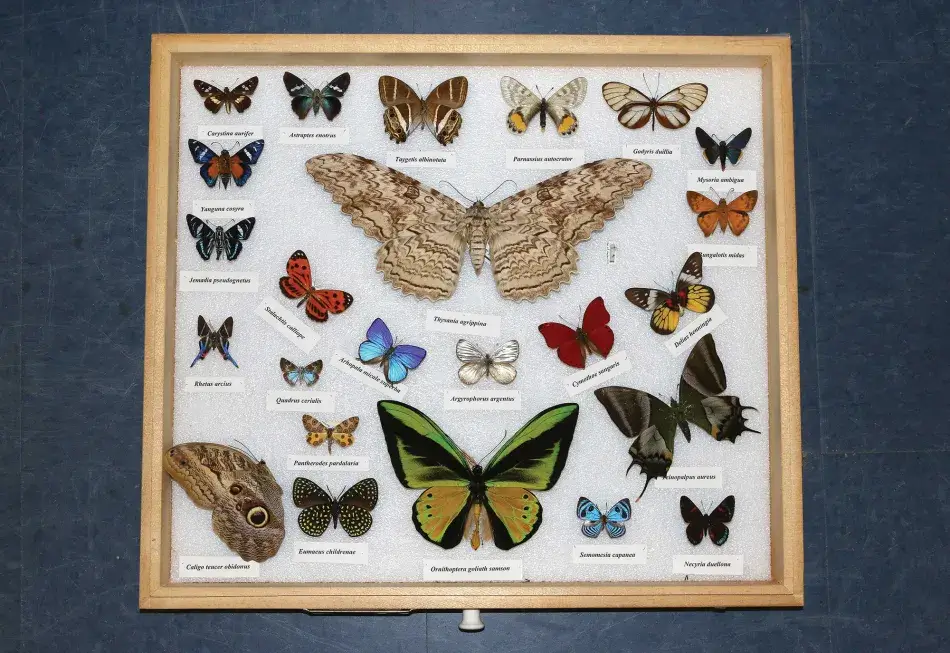
PS: Let’s take a closer look at natural history museums. Natural history collections trace their history, in some cases, back several centuries, and today, natural history museums in the United States collectively house at least one billion specimens, and perhaps more! Globally, that number may be as high as three billion specimens. Natural history specimens represent science’s best accounting of Earth’s biodiversity, with each specimen documenting where a species occurred at a given point in time. Specimens provide documentation of species occurrences and baselines for assessing the effects of climate change and invasive species. Until recently, these vast collections were only available to specialists who could afford to travel to the physical collections. But today, our collections are being digitized, and both data and images of specimens are increasingly available online, providing free access to scientists, educators, and the public worldwide.
DS: You may be wondering what actually lies behind the scenes, behind the main exhibits? What treasures exist in museum cabinets and drawers? You may be envisioning a museum specimen as a stuffed bird or a pressed plant or a fossil tooth – and certainly many specimens are indeed these preserved materials. But natural history collections are increasingly also curating DNA samples and video and audio recordings – and all of these diverse specimens help tell us more about the world around us. In truth, only a tiny fraction of museum specimens is ever on display. Behind the exhibits – that is where the action occurs – is where our millions of specimens are stored and where we as researchers are privileged to examine and study them.
Today, by visiting museums across the country, we are going to go behind the scenes and share with you some of the content in those cabinets and drawers. We will turn to our American Academy colleagues at four other institutions to tell the stories of their collections. We will visit the Ornithology Collection at Harvard University’s Museum of Comparative Zoology with Academy member Scott Edwards. From there, we will cross the continent to visit the living collections of UCLA’s Mildred E. Mathias Botanical Garden and Herbarium, with Academy member Victoria Sork.
PS: We will then travel northward to the University of Oregon’s Museum of Natural and Cultural History with Academy member Jon Erlandson. From there, we will visit the University of Michigan’s Museum of Paleontology, where Academy member Philip Gingerich will introduce us to the Museum’s Director, paleontologist Matt Friedman. After that, we will return to the Florida Museum, where our colleague Akito Kawahara will share the wonders of our Museum’s Lepidoptera collection.
Scott Edwards led the event participants on a tour of the third floor – underground – of Harvard’s Northwest Laboratory, which is home to the fifth largest bird collection in the world. In total, the museum holds approximately four hundred thousand specimens, containing as much as 95 percent of all bird species.
Professor Edwards showed several specimens, including the now extinct North American Warbler, Bachman’s Warbler, the eggs of a passenger pigeon, and a collection of White-winged Crossbills. He also discussed the provenance of the collection, which was started nearly two hundred years ago, its use in genetics research, and its value as a source of ecological data.
“Museums have a very important role to play in preserving parts of biodiversity that are no longer on our planet. . . . We get requests from all over the world. And one of my jobs is to make sure that these specimens are accessible to a wide audience.”
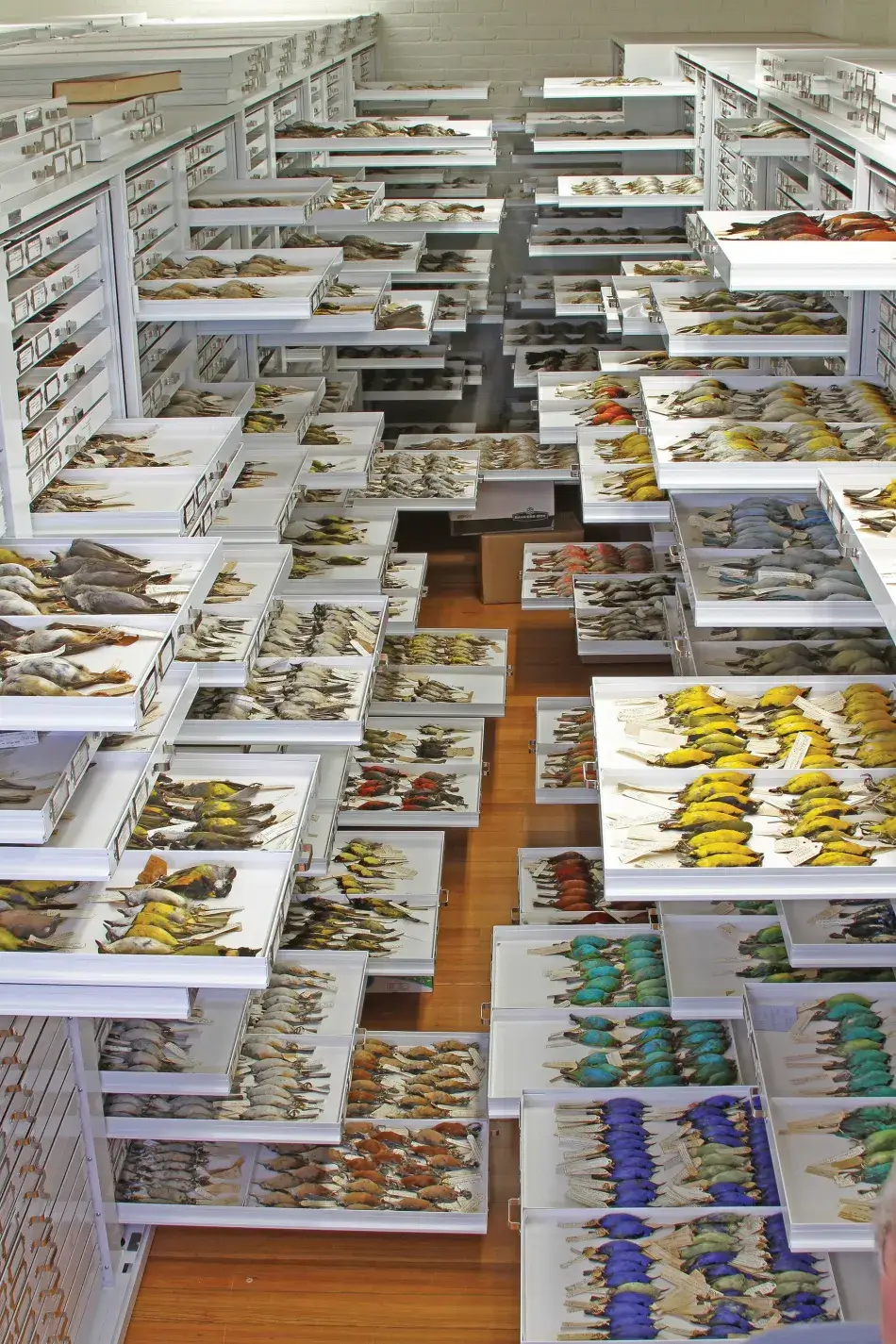
Victoria Sork is Director of the Mildred E. Mathias Botanical Garden and Herbarium at the University of California, Los Angeles, and a UCLA Distinguished Professor in the Department of Ecology and Evolutionary Biology, and in the Institute for the Environment and Sustainability. She was elected a Fellow of the American Academy in 2021.

Victoria Sork led the audience on a walking tour of the Botanical Garden, which has been part of the UCLA campus since the 1930s and home to nearly two thousand living plant species. The tour included stops at a rose gum eucalyptus (the tallest of any tree species in Southern California); their Palm Garden and Ancient Forest; and a storied and critically endangered deciduous conifer, the dawn redwood.
In addition to being a living collection, the Botanical Garden serves as a resource for DNA research, a venue for public engagement, and a way to honor communities native to the Los Angeles Basin. During the tour, Professor Sork discussed her collaborations with the Gabrieleno-Tongva community to plant species that could be harvested by the community for basket weaving and other traditional uses.
“I really thought closely about the responsibility to recognize Native peoples who have lived in this land long before UCLA became part of this landscape. . . . Three key words that come to mind are: recognition, respect, and reciprocity.”
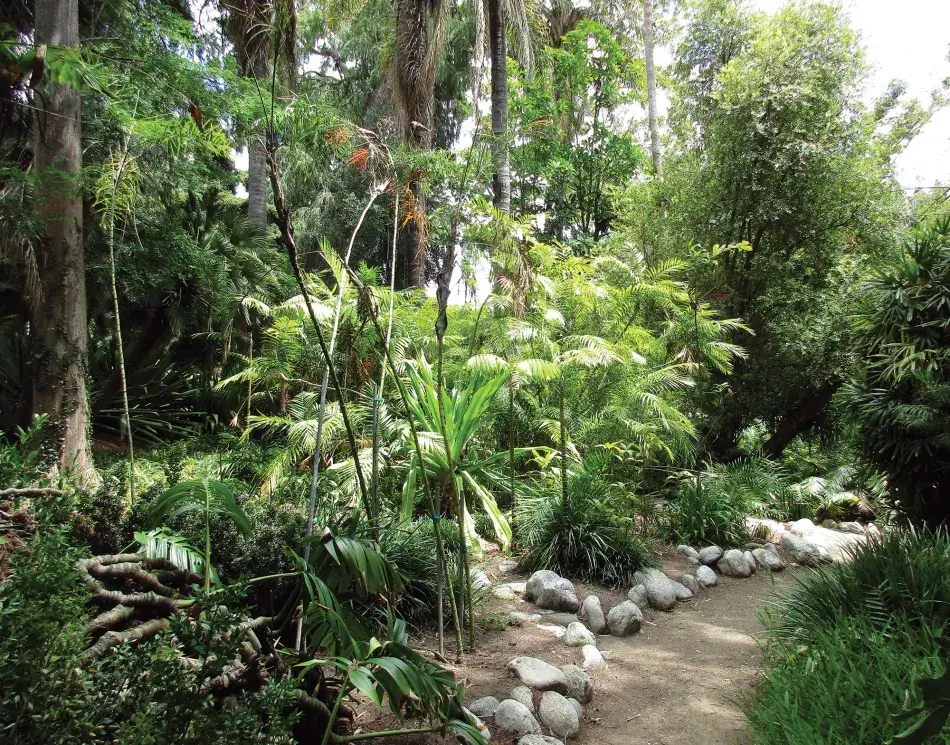
Jon Erlandson’s presentation highlighted the vast collection held at the Museum of Natural and Cultural History, which serves as the official repository for anthropological and paleontological collections for the State of Oregon and curates collections for the U.S. Bureau of Land Management, the National Park Service, the Forest Service, and other federal agencies.
Among the items on display at the Museum are a fossil collection that illustrates mammalian evolution and climate change, the world’s oldest running shoes, and an exhibit focused on the Native Americans who lived and thrived in Oregon for more than fourteen thousand years.
“We don’t shy away from controversial topics. We address evolution, climate change, and social justice issues. . . . We stress the links between the past, present, and future in all of our exhibits and programs, working to imbue a sense of constructive stewardship in our visitors.”
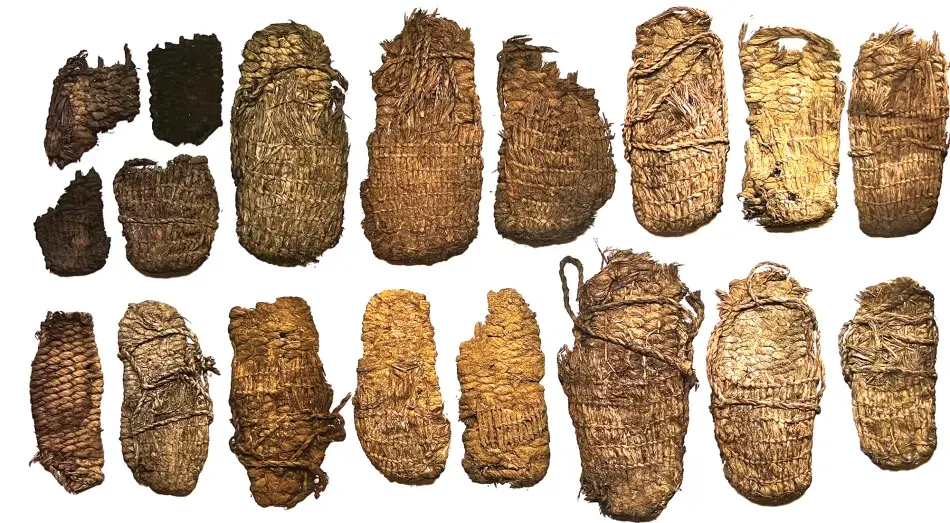
Matt Friedman invited the audience into the collections’ storage space at the Museum of Paleontology to see a fraction of the nearly three million fossil specimens housed at the Museum. He showed the cast of the skull of an early whale whose dentition resembles that of a human, a variety of ammonite fossils, and specimens from fifty-six million years ago. He also discussed the essential role of avocational paleontologists who make donations to the Museum’s collections.
“We tend to think about paleontology as the study of things that happened a long time ago, but, of course, paleontology has a very real bearing on our understanding of things that could happen in the future.”
Akito Kawahara led participants on a walking tour of the public exhibitions and storage space that house the Florida Museum of Natural History’s Lepidoptera collection. The moths and butterflies on display include both rare as well as common species found throughout the world. The collection not only captivates the public but helps scientists answer questions about evolution and biodiversity. Professor Kawahara spoke about the combination of public and private support required to build an appropriate space for such an important collection.
“Some of the specimens in this drawer are very rare, and some of them come from places where the habitat no longer exists. . . . This information is very important for understanding how the world is changing and what organisms existed in place and time.”
Following the tour of the museums, the speakers answered questions from the audience.
David Oxtoby: The Academy has a new commission on Accelerating Climate Action, and one of the things that the commission has been focusing on is that many people are not convinced by scientific facts alone. Though it’s important to show the science and museums are doing an excellent job at that, you also need to include moral and ethical arguments and integrate storytelling, among other things. I’m curious about how you think about that in the exhibits and programming at your museums.
Victoria Sork: You can tell stories in many ways. When people come to the Botanical Garden, I think it is important to use that opportunity to talk about plants from around the world but also to bring up the issue of climate change. Certainly, museums get involved in outreach activities to school groups and schoolkids, many of whom do not get the chance to really understand and study nature. I think raising consciousness about the importance of nature, the planet, climate warming, and loss of species is something that we can do in a very gentle way just by touching and connecting with people’s love of nature. It is a responsibility that we can fulfill through our public outreach programs.
Jon Erlandson: I agree with Victoria. A lot of people in Oregon, including schoolkids from all over the state, can’t get to the Museum of Natural and Cultural History. So during the pandemic, we started sending programs and lessons about the important issues that threaten us as a species today to the schools and libraries across Oregon as a way to reach the schoolchildren.
Pam Soltis: The Florida Museum of Natural History has also been extremely active during the pandemic trying to reach the schools throughout Florida. We have a program called the Scientist in Every Florida School in which students, faculty, and staff make literally hundreds of visits to school classrooms around the state, sharing information, lessons, and just fun experiences with K-12 students. The pandemic has given us an opportunity to think about how to broaden our reach to children and older schoolkids whom we haven’t been able to engage in the past.
Audience Member: The presentations today really emphasized the importance of gardens and museums in a variety of ways, from research to cultural issues. At the same time, it’s clear that a lot of gardens and museums are struggling. Could the speakers talk about the kinds of struggles they face and what can be done to impress upon people the importance of these institutions apart from their academic value?
Erlandson: The Museum of Natural and Cultural History has had some challenges during the pandemic, but even before then. After we were accredited in 2016 by the AAM (American Alliance of Museums), the University of Oregon cut our funding by 20 percent, which is a significant amount. We had to lay off some of our public program staff. What allowed us to survive and move forward has been our extensive development efforts. We’ve increased our endowment by more than tenfold and that allows us to sustain our programs in perpetuity.
Scott Edwards: Pam, I, and several others worked on a report through the National Academy of Sciences on the importance of biological collections, and how they can be sustainable. We recommended that museums need to have diverse sources of funding. And so private funding, as we just heard, is important. The United States is extremely unique in that we have government programs that support collections. The National Science Foundation has a collections improvement program that is, in my experience, virtually unheard of in other countries. So we are very fortunate in that way.
Audience Member: This is a question for Victoria Sork. Do you ever have trouble convincing people or explaining that a botanic garden is, in some sense, a museum, and that you’re trying to preserve the specimens for study?
Sork: Our Botanical Garden is a teaching and research garden. Because a very small part of our budget comes from the university, we need public support. And that’s when I realized we need attractive displays within the garden to bring people in, so then you can start educating them about different species. I think herbariums have even more of a challenge in how to do this. We just renovated our herbarium, and we’re going to try to involve the public, maybe amateur botanists and conservation biologists who will help to identify specimens. Our hope is to get more involvement and appreciation of why we document, preserve, and study the wonderful diversity of our world.
Sork: I have a question for my fellow panelists about the decolonization movement and recognizing where specimens have come from and how they were gathered. I’m curious what other museums, especially those that have collections from all over the world, are doing to recognize where things came from.
Erlandson: Certainly, for any American museum that has archaeological collections, the decolonization movement is huge. It started with the Native American Graves Protection and Repatriation Act. There are museums that have fought the return and repatriation of human remains and associated burial materials. Oregon’s Museum of Natural and Cultural History has always been in full legal and philosophical compliance with NAGPRA, and it’s one of the reasons our relationship with Oregon’s tribes is so strong.
Pam Soltis: For the Florida Museum of Natural History, this is something that our archeology collections have been dealing with for a long time. Where did these collections come from? Under what circumstances were the specimens collected? Who was involved in the collections beyond the person whose name appears on the label? How do we provide attribution? How do we share data appropriately? There are many questions that have been raised in recent years and we’re just starting to have some of these discussions. Over the next several years, we have a lot of responsibilities to live up to, a lot of growth, and a lot of things that need to be addressed.
Edwards: In addition to decolonization, there’s also just the bare fact that a lot of museums in this country have a very racist origin. Harvard’s Museum of Comparative Zoology (MCZ) and the Peabody Museum of Anthropology next door are a case in point. Louis Agassiz founded our museum in 1859 and he, even in his own time, was recognized to be a virulent racist. He collected distasteful objects, such as photographs of slaves. A few years ago, descendants of those slaves demanded retribution. There are also unsung heroes in museums who, for reasons of their race, creed, or gender, have not been celebrated as much as they should be in the building of those collections. A case in point is an African American in the MCZ, Robert Gilbert, who was working in the late 1800s and early 1900s for William Brewster, a much better-known ornithologist, and did a lot to ensure Brewster’s success. Until now, he has not been recognized. It’s a long road ahead, and I think we all have to take a less biased view of the history of museums, and not only try to address the injustices, but also celebrate all the unsung heroes who have made some of these museums great attributes of modern society.
Oxtoby: To follow up on that, is ecotourism, where you go to an underdeveloped country and see amazing living species, helping or hurting? Is bringing tourists into these places a concern?
Edwards: I think ecotourism is recognized as being an important source of income for local communities. The industry is in a much better position now to reward local and Indigenous people in that enterprise. On the flip side, people in Africa and in other areas of the globe want their own museums, which have a universal kind of appeal. So it’s incumbent on scientists and administrators in the West to help facilitate that so folks in their local communities can celebrate their natural specimens.
Douglas Soltis: This has been a terrific program. We hope you had as much fun traveling across the country to these collections as we have and that you gained a better understanding of what’s behind the scenes at natural history museums. Many thanks to Scott, Victoria, Jon, Philip, Matt, and Akito for guiding us through the collections. Thanks also to our excellent staff, some of whom are still here at the Florida Museum, especially Dale Johnson and Alberto Lopez, for logistic support this evening. And many thanks as well to David Oxtoby, Patrick Meade, and Laurie McDonough at the American Academy for pulling this event together.
A recording of this event is available on the Academy’s website. To view or listen to the presentations, visit www.amacad.org/events/collections-museums.
